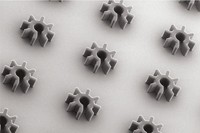Advertisement
Grab your lab coat. Let's get started
Welcome!
Welcome!
Create an account below to get 6 C&EN articles per month, receive newsletters and more - all free.
It seems this is your first time logging in online. Please enter the following information to continue.
As an ACS member you automatically get access to this site. All we need is few more details to create your reading experience.
Not you? Sign in with a different account.
Not you? Sign in with a different account.
ERROR 1
ERROR 1
ERROR 2
ERROR 2
ERROR 2
ERROR 2
ERROR 2
Password and Confirm password must match.
If you have an ACS member number, please enter it here so we can link this account to your membership. (optional)
ERROR 2
ACS values your privacy. By submitting your information, you are gaining access to C&EN and subscribing to our weekly newsletter. We use the information you provide to make your reading experience better, and we will never sell your data to third party members.
Biological Chemistry
Cargo Delivery To Cells Gets Supersized
Cell Biology: Photothermal nanoblade cuts cell membranes to inject large goods
by Laura Cassiday
January 27, 2011

For decades, scientists have tinkered with cells' inner workings by injecting foreign molecules, such as DNA plasmids and small molecules, into the cytosol and nucleus. But delivering big cargos such as chromosomes, organelles, or bacteria has been difficult, if not impossible, without killing the cells. Now researchers have developed a photothermal nanoblade that cuts a resealable, micrometer-sized hole in the cell membrane, enabling efficient delivery of large cargos (Anal. Chem., DOI: 10.1021/ac102532w).
Plenty of methods exist to transfer relatively small macromolecules into mammalian cells. They include electroporation, viral delivery, and chemical transfection. To inject larger molecules up to 0.5 µm in diameter, scientists must puncture the cell's surface with the sharp tip of a glass microcapillary. Often, cells don't survive the trauma.
Immunologist and cancer biologist Michael Teitell and mechanical engineer Pei-Yu Chiou of the University of California, Los Angeles, teamed up to develop a gentler method. Instead of stabbing the cell's lipid membrane, they and their colleagues produced a nano-sized bubble of water vapor to pop a hole in it. To generate the bubble, they lightly touched the cell membrane with a glass microcapillary pipet coated at the tip with a thin film of titanium. Next, they aimed a laser and shot a pulse of green light toward the cell. The pulse heated the titanium film, which vaporized a thin layer of water around the pipet. The resulting nanobubble expanded and burst rapidly, cutting the cell membrane with a shearing force.
This half-moon–shaped "scar" in the cell membrane acts like a cat door, Teitell says. The researchers apply pressure to the scar with a small pump attached to the pipet to open the door so that cargo in the microcapillary can flow into the cell. "When we turn the pressure off, the door swings closed," Teitell says.
Unlike a standard glass microcapillary, the photothermal nanoblade never enters the cell, which limits structural damage and speeds repair. As a result, the researchers found, more than 90% of treated cells survive.
The investigators could deliver cargos ranging from 1 nm to 2 µm in diameter, including RNA, fluorescent beads, and live intracellular bacteria. The technique worked on a variety of cell types, such as primary fibroblasts, HeLa cells, and human embryonic stem cells.
"This method is the first to deliver large cargo into cells effectively, reliably, and safely," says Ming Wu, an electrical engineer at the University of California, Berkeley. He says that the technique will be useful for injecting molecular sensors into cells, such as nanoparticles for use with surface-enhanced Raman spectroscopy. In the future, Teitell hopes that the technique might even allow scientists to deliver organelles, including nuclei, to cells.





Join the conversation
Contact the reporter
Submit a Letter to the Editor for publication
Engage with us on Twitter